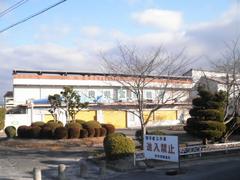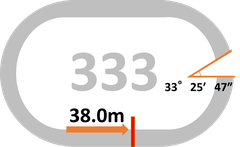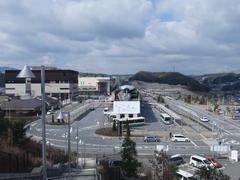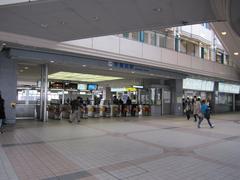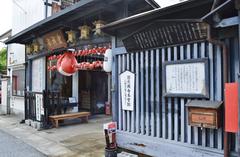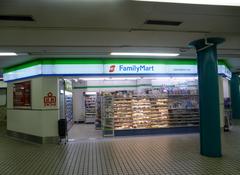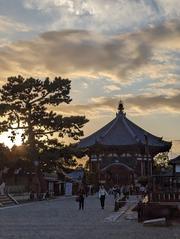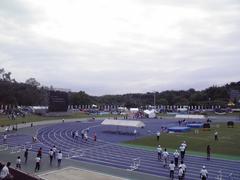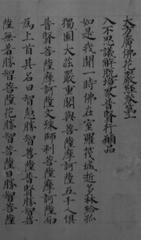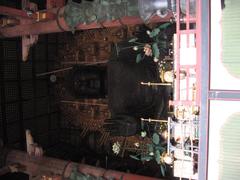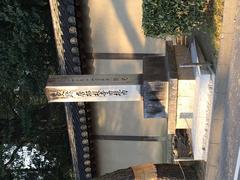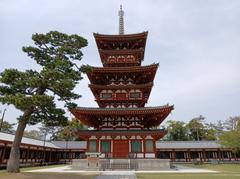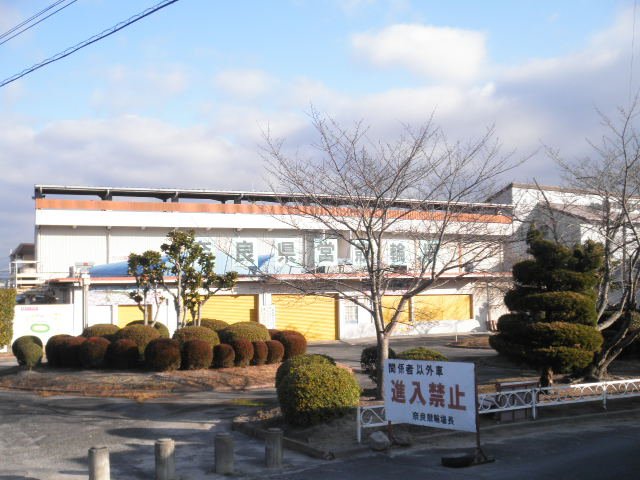
Nara Velodrome Visiting Hours, Tickets, and Guide to Nara Historical Sites
Date: 14/06/2025
Introduction
Nara, Japan’s first permanent capital, is celebrated worldwide for its UNESCO World Heritage temples, sacred deer, and deep-rooted traditions. Amidst this rich cultural landscape stands the Nara Velodrome—a modern sporting venue where the thrills of keirin cycling intertwine with the city’s ancient heritage. This guide offers a comprehensive look at the Nara Velodrome’s visiting hours, ticketing, accessibility, facilities, and nearby attractions, helping you plan a seamless visit that combines sporting excitement with cultural exploration (tokyocycle.com; Japan Travel).
Table of Contents
- Overview: Nara Velodrome and Its Significance
- Origins & Development of the Velodrome
- Nara’s Sporting Heritage & Historical Context
- Visiting Hours & Ticket Information
- Venue Features & Accessibility
- Keirin Racing: Culture & Economy
- Visitor Experience: Facilities & Services
- Getting There: Transportation Guide
- Nearby Historical Sites & Attractions
- Cultural Context & Etiquette
- Seasonal Events & Local Cuisine
- FAQs
- Conclusion & Next Steps
- References
Overview: Nara Velodrome and Its Significance
The Nara Velodrome is more than a premier track cycling arena—it’s a community hub where the unique Japanese sport of keirin, legal gambling, and local traditions converge. Its strategic location allows visitors to combine a day at the races with explorations of Nara’s world-famous temples, shrines, and parks (justaboutjapan.com; Japan Guide).
Origins & Development of the Velodrome
Track cycling gained popularity in Japan in the mid-20th century, with velodromes spreading nationwide. The Nara Velodrome was established in 1950 as part of this movement, becoming a focal point for keirin—an internationally recognized Japanese cycling discipline that blends athleticism and strategic betting (nrutech.com). The velodrome has since undergone regular renovations, maintaining UCI (Union Cycliste Internationale) compliance for international events (uci.org).
Nara’s Sporting Heritage & Historical Context
Nara’s legacy as Japan’s first permanent capital (710–784 CE) is woven into its sporting and cultural fabric. The velodrome symbolizes this blend of tradition and modernity, offering a space where residents and visitors engage with contemporary sport while remaining close to some of Japan’s oldest temples and shrines (factsanddetails.com).
Visiting Hours & Ticket Information
- Standard Hours: On race days, Nara Velodrome is generally open from 10:00 AM to 6:00 PM. Some events may have slightly different hours; check the official event calendar for specifics.
- Tickets: General admission is typically 1,000 yen, with discounts for seniors, children, and group bookings. Tickets are available at the entrance and, for major events, online or through the Nara Visitor Center & Inn.
- VIP Access: Premium seating and lounge packages are available at higher prices and often require advance reservation (Japan Travel).
Venue Features & Accessibility
- Seating: Tiered, covered grandstands with unobstructed track views; VIP lounges for premium experiences.
- Accessibility: Wheelchair ramps, elevators, accessible restrooms, and designated seating.
- Facilities: Food stalls, vending machines, betting windows, restrooms, and digital kiosks with race information.
The venue is designed for inclusivity, with multilingual support available through staff and visitor centers (Agoda Travel Guide).
Keirin Racing: Culture & Economy
Keirin, born in Japan in 1948, is a fast-paced track cycling event that forms the backbone of Japan’s legal betting culture. Races at Nara Velodrome are lively social gatherings, drawing thousands of spectators and contributing to the local economy. The excitement extends beyond racing, with food, entertainment, and opportunities to experience Japanese sporting rituals (tokyocycle.com).
Visitor Experience: Facilities & Services
- Food & Drink: On-site restaurants and stalls serve local specialties like ramen, udon, and curry (Japan Travel).
- Betting: Pari-mutuel betting is central to keirin; instructions are provided, with staff assistance for newcomers.
- Support: The Nara Visitor Center & Inn offers multilingual support, Wi-Fi, and accessibility services.
Tips:
- Arrive 30+ minutes before races for best seating.
- Bring cash for betting and concessions.
- Use translation apps for signage and betting slips.
Getting There: Transportation Guide
From Kyoto or Osaka:
- By Kintetsu or JR lines to Nara Station (35–70 minutes).
- From station, take a local bus or taxi (15–20 minutes) to the velodrome.
By Bus: Nara Kotsu buses connect the velodrome with city centers and key attractions.
By Bicycle: Rentals available near major stations; cycling to the velodrome takes about 20–25 minutes (Japan Travel).
Nearby Historical Sites & Attractions
Nara Park & Sacred Deer
Home to over 1,300 free-roaming sika deer, Nara Park offers the chance to interact with these revered animals by feeding them “shika senbei” (deer crackers) (Japan Insides; Nara City Tourism Association).
Todaiji Temple
A UNESCO World Heritage Site featuring Japan’s largest bronze Buddha statue and one of the world’s largest wooden buildings (Japan Guide).
Kasuga Taisha Shrine
Famed for its thousands of stone and bronze lanterns, this Shinto shrine is integral to the city’s spiritual heritage (Japan Guide).
Kōfuku-ji Temple
An iconic five-story pagoda and a museum of Buddhist art (Japan Guide).
Naramachi Historic District
Explore preserved Edo-period merchant houses, boutique shops, and folk museums (Live Japan).
Nara National Museum
Renowned for its Buddhist art collection and annual Shōsō-in Treasure Exhibition (Japan Insides).
Mount Wakakusa
Enjoy views of Nara and the dramatic Wakakusa Yamayaki festival (Nara City Tourism Association).
Irie Taikichi Memorial Museum of Photography
Exhibits focused on Nara’s landscapes and traditions (Live Japan).
M!Nara Shopping Mall
Modern shopping, dining, and entertainment in central Nara (Live Japan).
Cultural Context & Etiquette
Nara is steeped in Buddhist and Shinto traditions. Visitors should:
- Bow at shrines and temples, purify hands at entrances, and maintain a respectful demeanor.
- Feed deer only designated crackers; do not harass or chase animals.
- Observe posted rules for photography, especially in sacred areas (Lilla Green; Nara City Tourism Association).
Seasonal Events & Local Cuisine
- Shuni-e at Todaiji (March): Buddhist rituals for peace and harvest.
- Nara Tōkae (August): Lantern festival in Nara Park.
- Wakakusa Yamayaki (January): Burning of Mount Wakakusa.
- Local Specialties: Kakinoha-zushi, Nara pickles, sake, and traditional crafts (Japan Insides).
Frequently Asked Questions (FAQ)
Q: What are the Nara Velodrome’s visiting hours?
A: Usually 10:00 AM–6:00 PM on race days; always check the latest schedule (visitnara.jp).
Q: How can I buy tickets?
A: At the entrance, or online for special events. VIP and group bookings are best made in advance.
Q: Is the velodrome accessible?
A: Yes, with wheelchair-friendly facilities and multilingual staff.
Q: Are there guided tours?
A: Occasionally, especially on non-race days; inquire at the Nara Visitor Center & Inn.
Q: What else should I see nearby?
A: Nara Park, Todaiji Temple, Kasuga Taisha, and Naramachi are all recommended.
Conclusion & Next Steps
The Nara Velodrome offers a unique intersection of high-energy sporting action and profound cultural heritage. Its modern amenities, accessibility, and proximity to Nara’s most famous attractions make it a top destination for travelers seeking both excitement and enrichment.
Plan your visit:
- Check current schedules and ticket options via the Nara Velodrome official page.
- Consult the Nara Visitor Center & Inn for travel support.
- Download the Audiala app for live race updates and personalized travel tips.
Make the most of your time in Nara by exploring its extraordinary historical sites, engaging with local traditions, and experiencing the thrill of keirin racing in a setting that celebrates both the old and the new.
References
- The Essence of Velodromes, nrutech.com
- Velodrome Keirin Track in Japan, tokyocycle.com
- Discover Nara, justaboutjapan.com
- Nara Overview, factsanddetails.com
- Visit Nara Event Calendar, visitnara.jp
- Nara Velodrome Visitor Guide, japantravel.com
- Nara Visitor Center & Inn, sarusawa.nara.jp
- UCI Approves the 2025 Calendar, uci.org
- Top Things to See and Do in Nara, japaninsides.com
- Nara City Tourism Association, narashikanko.or.jp
- Meet the Sacred Deer of Nara, lillagreen.com
- Guide to Nara Temples, japan-guide.com
- Nara City Tourist Information, japantravel.com
- Live Japan: Nara Attractions
